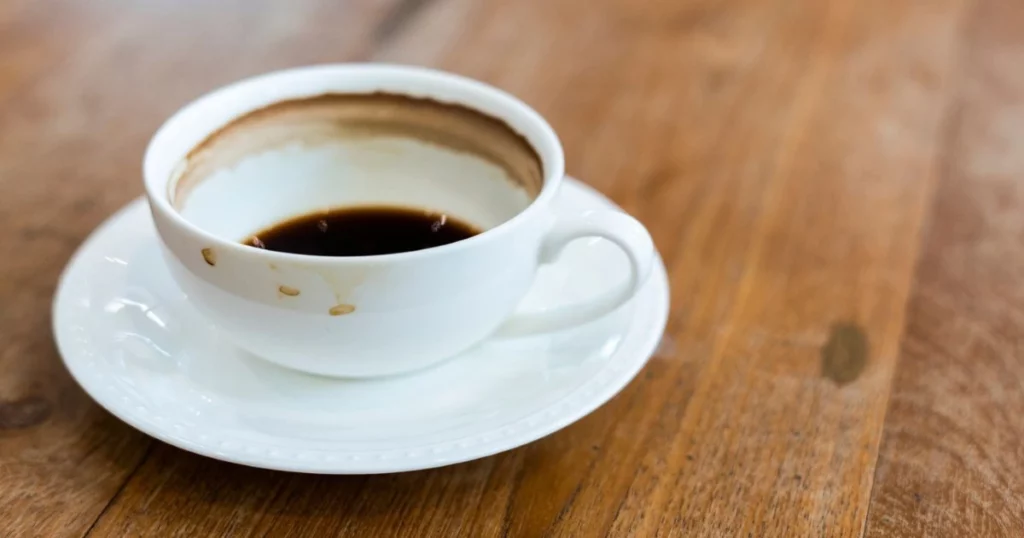No products in the cart.
Blog
How To Clean Coffee And Tea Stains From Mugs
Coffee and tea lovers worldwide have experienced the frustration of stubborn stains tarnishing their favorite mugs. Whether it’s the morning ritual of a steaming cup of coffee or the calming comfort of a hot cup of tea in the afternoon, these beverages leave behind unsightly marks that can be challenging to remove. However, fear not! With the right techniques and a bit of patience, you can restore your mugs to their former glory.
In this comprehensive guide, we’ll explore various methods for removing coffee and tea stains from mugs, providing detailed instructions and tips for each approach. From simple soaking methods to the use of household items like bicarbonate of soda, lemon, vinegar, and even denture tablets, we’ve got you covered. Additionally, we’ll discuss the importance of regular maintenance and offer advice on cleaning mugs in the dishwasher. So, let’s dive in and discover how to keep your mugs looking pristine.
Soaking Method
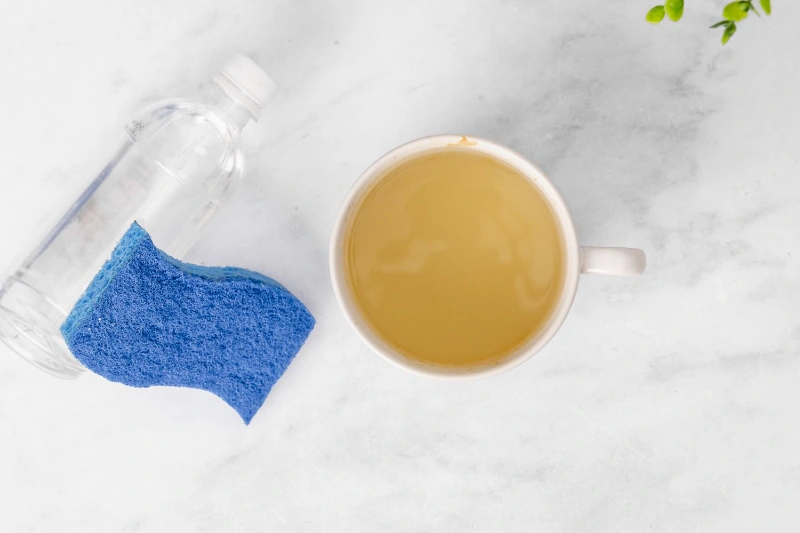
What You’ll Need:
- Warm water
- Dish soap
- Sponge or soft-bristled brush
- Optional: Baking soda, vinegar, or denture tablets
Instructions:
- Fill your sink or a large basin with warm water.
- Add a few drops of dish soap to the water and mix until it’s sudsy.
- Submerge the stained mugs in the soapy water and let them soak for at least 30 minutes, or overnight for tougher stains.
- After soaking, use a sponge or soft-bristled brush to gently scrub the stains away.
- For stubborn stains, sprinkle baking soda directly onto the stains before scrubbing, or add a splash of vinegar to the soaking water.
- Rinse the mugs thoroughly with clean water and dry them with a clean towel.
Soaking is an effective method for loosening stubborn stains, allowing the soap and warm water to penetrate and lift the discoloration from the mug’s surface. Adding baking soda or vinegar to the soaking solution can enhance its cleaning power, making it easier to remove tough stains.
Using Bicarbonate of Soda
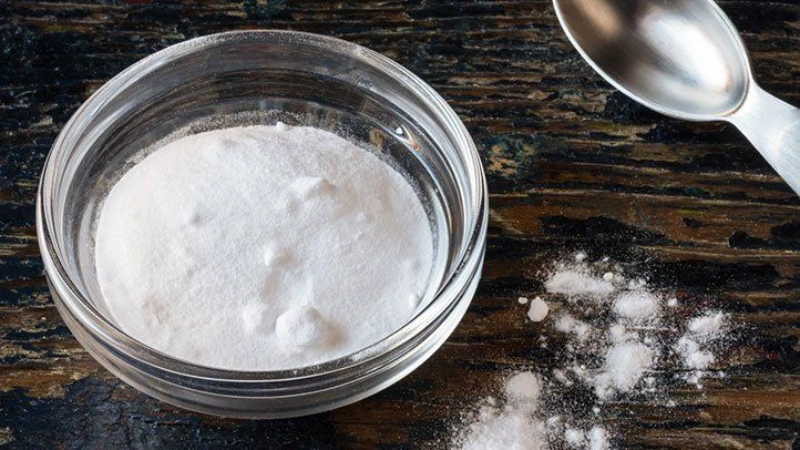
What You’ll Need:
- Bicarbonate of soda (baking soda)
- Water
- Sponge or soft-bristled brush
Instructions:
- Create a paste by mixing bicarbonate of soda with a small amount of water until it forms a thick consistency.
- Apply the paste directly to the stained areas of the mug.
- Use a sponge or soft-bristled brush to scrub the paste into the stains, focusing on areas with heavy discoloration.
- Allow the paste to sit on the stains for 15-30 minutes.
- Rinse the mug thoroughly with water to remove the paste and any loosened stains.
- Repeat the process if necessary until the stains are fully removed.
Bicarbonate of soda is a mild abrasive that helps to gently scrub away stains without scratching the mug’s surface. Its alkaline nature also helps to neutralize acids in coffee and tea, aiding in stain removal.
Using Lemon
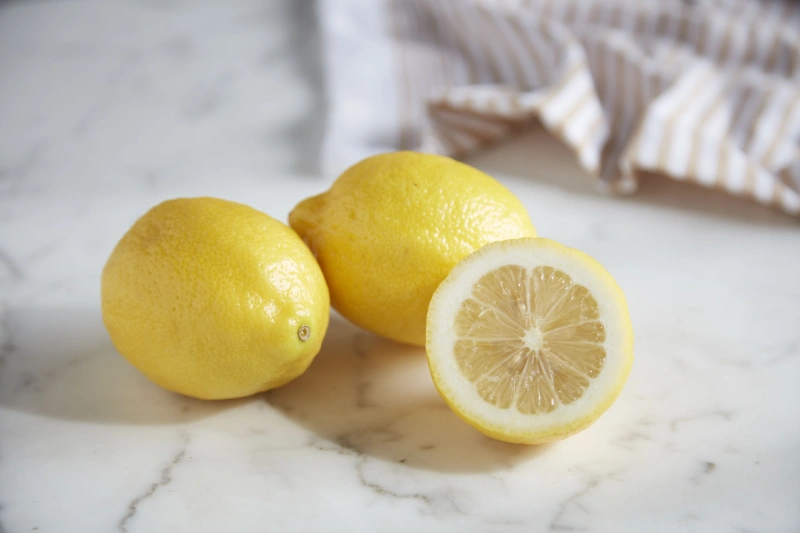
What You’ll Need:
- Lemon
- Salt or baking soda
- Water
- Sponge or soft-bristled brush
Instructions:
- Cut a lemon in half and sprinkle salt or baking soda onto the cut side.
- Use the lemon halves to scrub the stained areas of the mug, squeezing gently to release the juice.
- Alternatively, you can squeeze lemon juice directly onto the stains and sprinkle them with salt or baking soda.
- Allow the lemon juice and salt/baking soda mixture to sit on the stains for 15-30 minutes.
- Use a sponge or soft-bristled brush to scrub the stains, adding more lemon juice or salt/baking soda as needed.
- Rinse the mug thoroughly with water to remove any residue.
Lemon contains natural acids that can help to break down stains, while its fresh scent leaves your mug smelling clean and citrusy. Salt or baking soda provides additional abrasion for stubborn stains, aiding in their removal.
Soak in Vinegar and Scrub
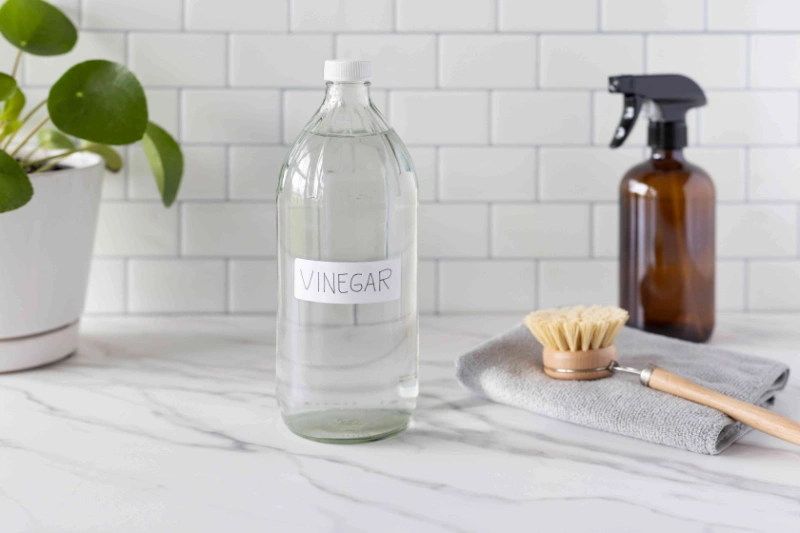
What You’ll Need:
- White vinegar
- Water
- Sponge or soft-bristled brush
Instructions:
- Fill a basin or sink with equal parts white vinegar and water.
- Submerge the stained mugs in the vinegar-water solution and let them soak for at least 30 minutes, or overnight for tougher stains.
- After soaking, use a sponge or soft-bristled brush to scrub the stains away.
- Rinse the mugs thoroughly with clean water to remove any vinegar residue.
Vinegar is acidic, making it effective for dissolving alkaline stains like those left by coffee and tea. Its mild acidic properties also help to deodorize the mug, eliminating any lingering odors.
Denture Tablet
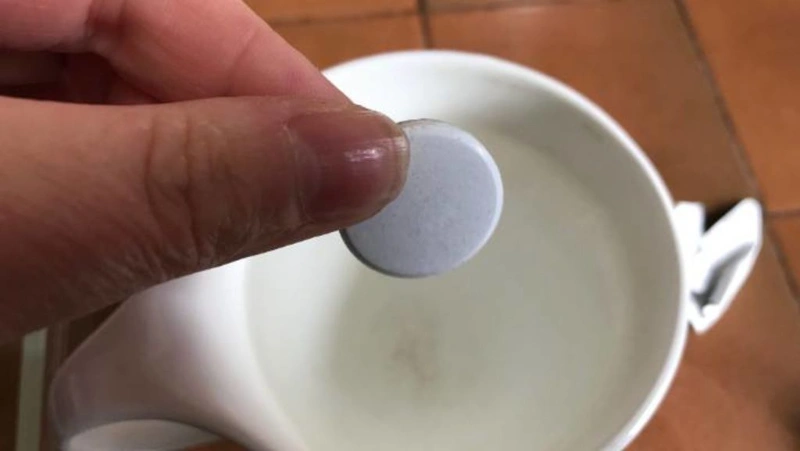
What You’ll Need:
- Denture cleaning tablets
- Warm water
Instructions:
- Fill your sink or a large basin with warm water.
- Drop one denture cleaning tablet into the water and allow it to dissolve.
- Submerge the stained mugs in the denture tablet solution and let them soak for the recommended amount of time specified on the product packaging.
- After soaking, use a sponge or soft-bristled brush to scrub the stains away.
- Rinse the mugs thoroughly with clean water.
Denture tablets contain active ingredients like sodium bicarbonate and citric acid, which help to break down stains and eliminate odors. They’re a convenient option for tackling tough stains without the need for scrubbing.
Cleaning Your Mugs in the Dishwasher
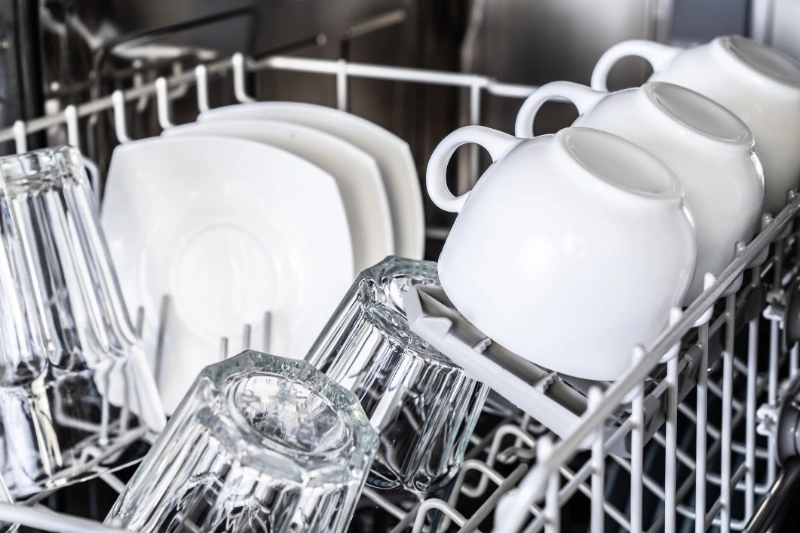
While handwashing is often preferred for stain removal, you can also clean your mugs in the dishwasher. Simply load the stained mugs into the dishwasher as usual and add dishwashing detergent. Run the dishwasher on a normal cycle with hot water. For particularly stubborn stains, you may want to pre-treat the mugs using one of the methods mentioned above before placing them in the dishwasher.
Tricks and Tips to Get Coffee Stains Out of Mugs (Tea Stains, Too!)
- Regular Maintenance: Rinse your mugs with warm water immediately after use to prevent stains from setting in.
- Use a Non-Abrasive Sponge or Brush: Avoid using abrasive materials like steel wool, as they can scratch the surface of your mugs.
- Test in a Small Area: Before using any cleaning method, test it on a small, inconspicuous area of the mug to ensure it won’t cause damage.
- Be Patient: Stubborn stains may require multiple attempts to remove fully, so don’t get discouraged if they don’t disappear after the first try.
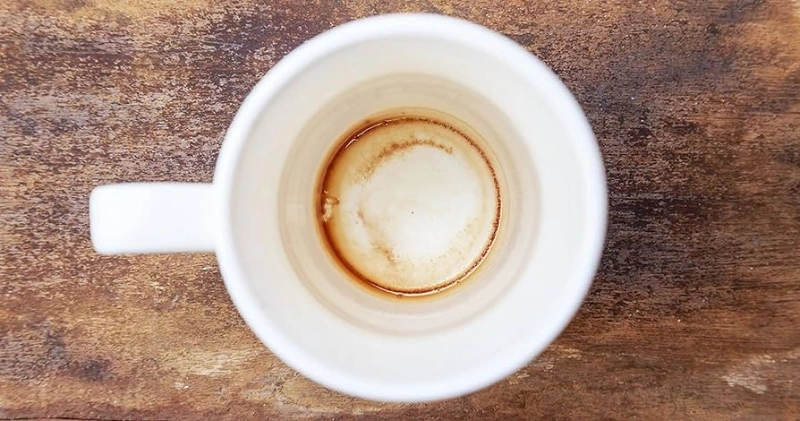
FAQs
Can I use bleach to remove coffee and tea stains from mugs?
While bleach can be effective for stain removal, it’s not recommended for use on mugs, as it can be harsh and may damage the finish.
Will soaking mugs in hot water help remove stains?
Hot water can help loosen stains, but for best results, it’s recommended to use a cleaning solution like those mentioned above.
How often should I clean my mugs to prevent stains?
Ideally, you should clean your mugs after each use to prevent stains from setting in. If stains do occur, tackle them as soon as possible to avoid them becoming more difficult to remove.
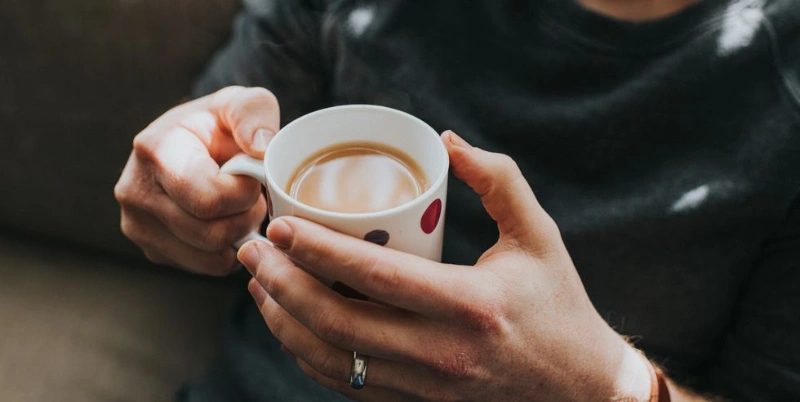
Conclusion
With the methods outlined in this guide, you can bid farewell to stubborn coffee and tea stains and enjoy your favorite beverages in pristine mugs once again. Whether you prefer soaking, using household ingredients like bicarbonate of soda and lemon, or relying on commercial products like denture tablets, there’s a solution for every stain.
By incorporating regular maintenance and following these tips, you can keep your mugs looking clean and fresh for years to come. So, go ahead and raise a stain-free mug to your next cup of coffee or tea!


